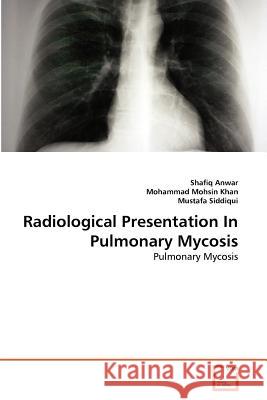Radiological Presentation In Pulmonary Mycosis » książka
Radiological Presentation In Pulmonary Mycosis
ISBN-13: 9783639378801 / Angielski / Miękka / 2011 / 92 str.
Fungi are simple vegetative structures. They lack chlorophyll and cannot conduct photosynthesis. Fungi are characterized by the formation of filaments or hyphae, which branch and interwine to form a dense net of growth. The mycelium represents the colony of a fungus. This matlike growth made of mycelium with its spores constitutes an irregular rudimentary plant called fungus. This is not differentiated into roots, stems or leaves. They are saprophytes as well as parasites, are extremely common and have worldwide distribution, only a few being pathogenic. Mycosis is acquired by inhalation of spores. They cause primary as well as secondary infections during the treatment of bacterial or viral infections with antibiotics, treatment with steroids or antimycotics, chronic debilitating diseases, or complicating infections. The fungal infections are superficial as well as deep. The superficial infections involve skin, nails hands and keratin containing structures, while the deep infections involve dermis, mouth, vagina, bones viscera like lungs.











